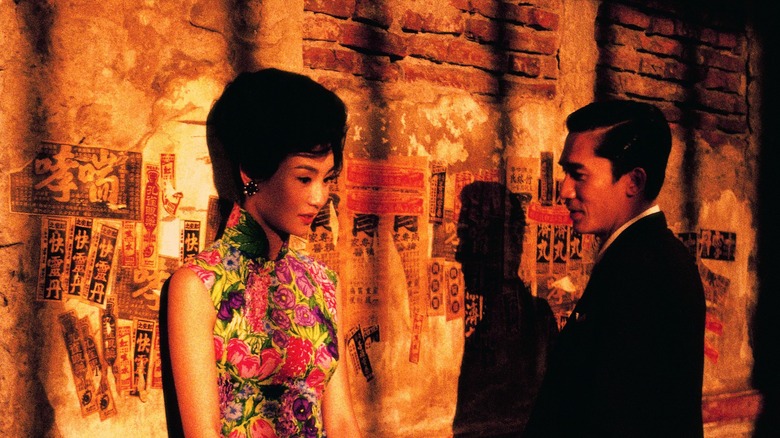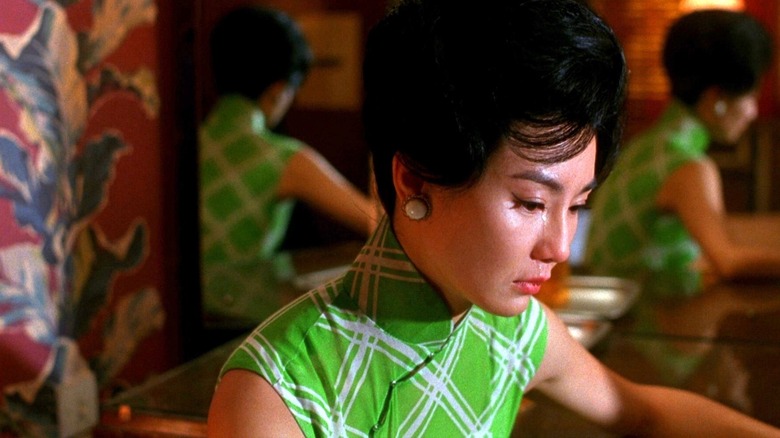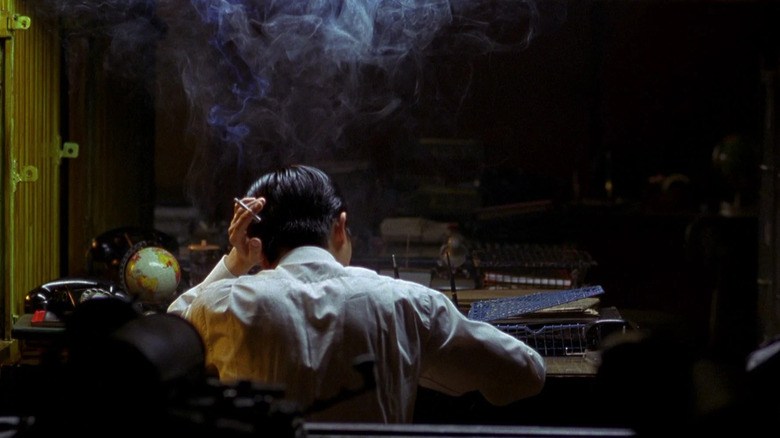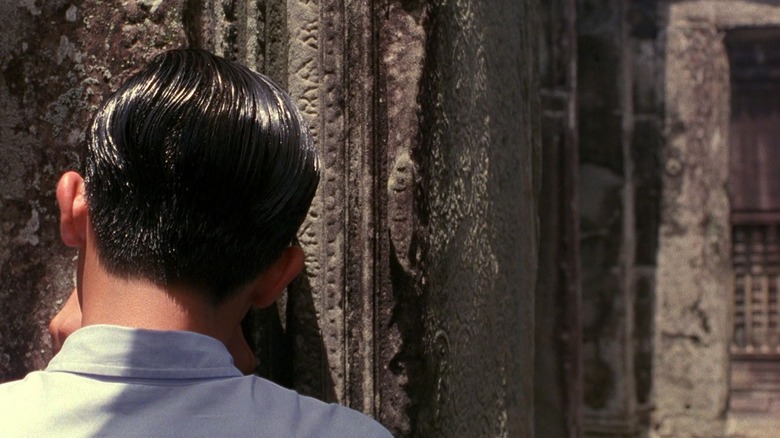In The Mood For Love Ending Explained: Remember Those Vanished Years
"It is a restless moment. She has kept her head lowered ... to give him a chance to come closer. But he could not, for lack of courage. She turns and walks away."
So reads the opening chyron at the beginning of Wong Kar-Wai's smoldering 2000 pseudo-romance "In the Mood for Love," a film about two attractive, well-dressed people who spend a lot of time in restaurant booths staring at one another with longing in their eyes, only to turn away from each other and go their separate ways.
The two people in question are Tony Leung and Maggie Cheung, two of the biggest movie stars in the world. Leung looks irresistibly dashing with his impeccably combed hair and clean suits, and Cheung's hair and dresses are so dazzling they can only be the result of a supernatural effort. These two characters ache to have an affair and spend the entirety of "In the Mood for Love" not having an affair. Wong and his cinematographers Christopher Doyle and Mark Lee Ping-Bing have made what is more or less a music video, or perhaps a perfume commercial, dedicated to the aesthetics of yearning.
Any potentially illicit action is kept off-screen. Leung and Cheung rarely engage in physical contact, and their respective spouses are never seen. Their spouses, they have found, are already embroiled in an affair of their own, and Cheung and Leung begin to regularly meet to half-discuss their bottled-up feelings on the matter. In one scene, they play-act conversations they might have with their spouses, trying to reveal their hurt. They can barely get the words out. There is more left unsaid than is said. This goes on for years.
Wong's doomed romances
The Cuban standard "Quizás, Quizás, Quizás" plays repeatedly on the soundtrack. Steam billows. No one kisses. The audience is lulled into a somnambulist, romantic trance. This lack of romantic connection, despite sharing a common space, is a common theme in Wong's films. One of the two shorts that make up his 1994 film "Chungking Express" is about a woman who insinuates herself into the apartment of a police officer and cleans the place up, hoping to improve his life. Later, he will buy the snack bar where she used to work as a tribute to the romance they never had. Wong's 1997 romance "Happy Together" is about a relationship between two men that never quite settles down.
Set in Hong Kong in 1962, "In the Mood for Love," follows Chow Mo-Wan and Su Li-Zhen as they move into neighboring apartments. The city is packed. Despite human proximity, there is little emotional connection. Chow and Lu are each rich and can afford just about anything. They are also each afflicted with an unspoken depression, and seem to have withdrawn from the world. Even for people living in a cramped, repressed environment, they say less than the average person. When they discover their spouses' affair, they begin to spend more time together, using each other's mere presence as a form of therapy.
They would talk, but that would interrupt Wong's meticulously constructed visual tableaus. To kiss would violate the rule of thirds. Chow and Su live in a sumptuously lit diorama, an unreal world where emotions must be repressed for fear of altering a filmmaker's aesthetic. "In the Mood for Love" is a gorgeous film about emotional languishing wherein very little actually happens.
The ending
When Chow and Lu do realize they have feelings for one another, Chow invites her to Singapore, but she arrives late and he goes without her. Time passes, instigating a tidal wave of pining. Chow, when in Singapore, relates to a friend the details of ancient confession techniques. Anyone who had a secret would whisper it into the hollow of a tree and then stuff the hollow with mud, burying it forever. There will be an instance of Lu — like in "Chungking Express" — going into Chow's apartment while he is gone, merely to live in his space. He finds her lipstick-covered cigarette butt in his ashtray. It's at about this point that antsier audience members will want to reach into the screen and physically push Leung and Cheung together so they'll finally have sex and just get it over with already, aesthetics be damned. One longs for Chow, Lu, and Wong to allow things to get a little messy, for God's sake.
Three more years pass. Chow returns back to his old apartment, hoping to have a friendly chat with his old landlord. What he doesn't realize is that Lu is already living back in the same place. Years later they still crave each other.
The story Chow told earlier will prove to be a setup. At the very end of "In the Mood for Love," Chow travels to Angkor Wat, a Buddhist temple in Cambodia, originally constructed a Hindu monument and the largest religious shrine in the world. Chow whispers a secret into a hole in the wall and covers it with mud. Chow has transformed his romantic longing into a religious purification rite.
Purification
One might infer that Wong is chronicling the connection between sexual guilt and religious adherence, but Wong is not so politically overt a filmmaker as that. Wong is only interested in 1960s Hong Kong as a setting for repression. In a freer time and place, Lu and Chow would be more open to leaving their spouses and beginning their own relationship in earnest. Because of misread social cues constricted with a cloud of general sexual annihilation, Chow and Lu are barely able to speak at all, much less speak openly and earnestly about their feelings and their possible future together. Like in a teen romance novel, the romance becomes enhanced by the walls between them. Nothing is more romantic, it seems, than the inability to be romantic.
"In the Mood for Love" indeed, as they will never move past merely being in the mood.
Wong's film regularly tops lists as one of the greatest films of all time. On the 2012 Sight & Sound poll, it came in at number 24, and was the most voted-for film made between 1980 and the present. That poll is held once every decade, and we're about due for another one. It remains to be seen if "In the Mood for Love" retains its current critical estimation.
One thing on which we might all agree is that "In the Mood for Love" is one of the most beautiful films ever made. Doyle's and Lee's cinematography is some of the best ever, and the lush shots of gorgeous people like Leung and Cheung sauntering down smoky alleyways will exhilarate even the most jaded among us.
Recently, "In the Mood for Love" was payed homage in Daniels' film "Everything Everywhere All at Once." In that film, Wong's signature romantic ache was played for laughs.



